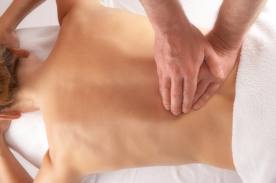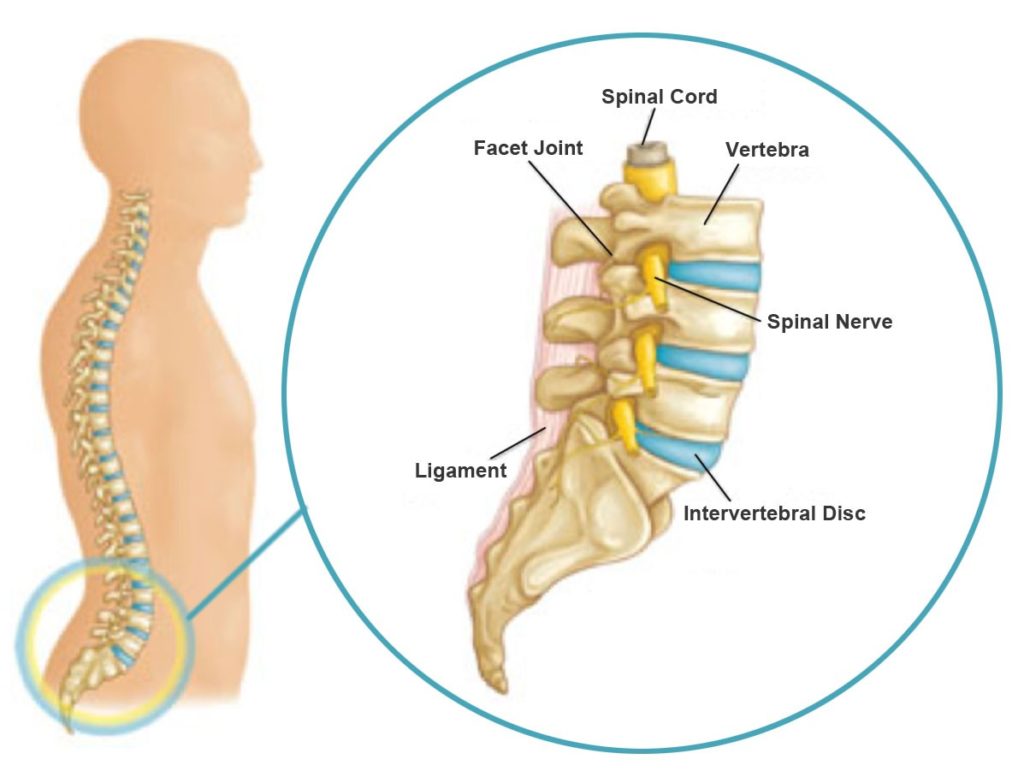by Diana Khoury
A large percentage of the population will experience some form of lower back (lumbar) pain during their adult life. In fact, lumbar pain is one of the top 5 reasons people seek medical care in the United States today. “Total incremental direct health care costs attributable to lower back pain in the U.S. were estimated at $26.3 billion in 1998. In addition, indirect costs related to days lost from work are substantial, with approximately 2% of the U.S. work force compensated for back injuries each year.”1
Financial costs aside, dealing with acute or chronic lumbar pain can be physically and mentally challenging, and disruptive to an active lifestyle.
The causes of lumbar pain vary. It can result from an imbalance in the bones, muscles, joints or nerves in the lumbar region, or a combination. The imbalance may originate from bad postural habits, uncomfortable seats/chairs, poor footwear, skeletal misalignment, injury, asymmetrical muscle use (due to sports or other activities), or other, non-spinal sources within the body. Another factor is stress. Tired, aching, sore lower backs are often exacerbated by stress.
The Western medicine approach to lower back pain may involve treatment with medication, injections, or sometimes surgery. Increasingly, however, and for those patients that do not improve with anti-inflammatory medication, clinicians are recommending non-pharmacologic therapy with “proven benefits for acute lower back pain…[including] exercise therapy, acupuncture, massage therapy, spinal manipulation, yoga…or progressive relaxation.” 1
Josephine Briggs, MD, Director of the National Center for Complementary and Alternative Medicine, reports, “Massage is among the top ten most frequently used complementary health practices by adults and by children. Researchers have been investigating the effects of massage therapy on a number of wide-ranging conditions…[and] there is scientific evidence that points toward beneficial effects on back pain. 
A 2011 study from the Group Health Research Institute in Seattle investigated the effects of massage vs. medication and physical therapy on 401 participants suffering from non-specific lower back pain. After 10 weeks, two-thirds of the study participants receiving massage reported partial or full relief from their back pain, as opposed to a one-third success rate in those receiving standard medication and physical therapy.3
Massage is a non-invasive, low risk method of relieving lower back pain with little to no side effects. It can be sought independently or in support of a medical treatment plan. It works by relieving muscle tension and increasing circulation and oxygenation of tissues, improving range of motion in the affected area(s). Massage also releases endorphins in the body, reducing pain and anxiety and lowering stress levels.4Whether lower back pain is acute or chronic, massage can facilitate the return to a pain-free, active lifestyle.
This is an original article from Dreamclinic, Inc. Founded in Seattle in 2003, Dreamclinic is an award-winning Health and Wellness company, specializing in Massage Therapy, Acupuncture and Natural Health education. We provide massage services at our Seattle area clinics and at Workplaces around Puget Sound. Contact us to learn more about how Dreamclinic can help you, your family or your workplace experience greater health.
Resources:
1. http://annals.org/article.aspx?articleid=736814
2. http://nccam.nih.gov/research/blog/massage0214
3. http://www.npr.org/2011/07/04/137609072/got-lower-back-pain-massage-therapy-may-rub-it-out
4. http://www.spine-health.com/wellness/massage-therapy/can-massage-help-your-back-problem
Images:
www.tangobreath.com
http://brittanysnyderlmt.blogspot.com

